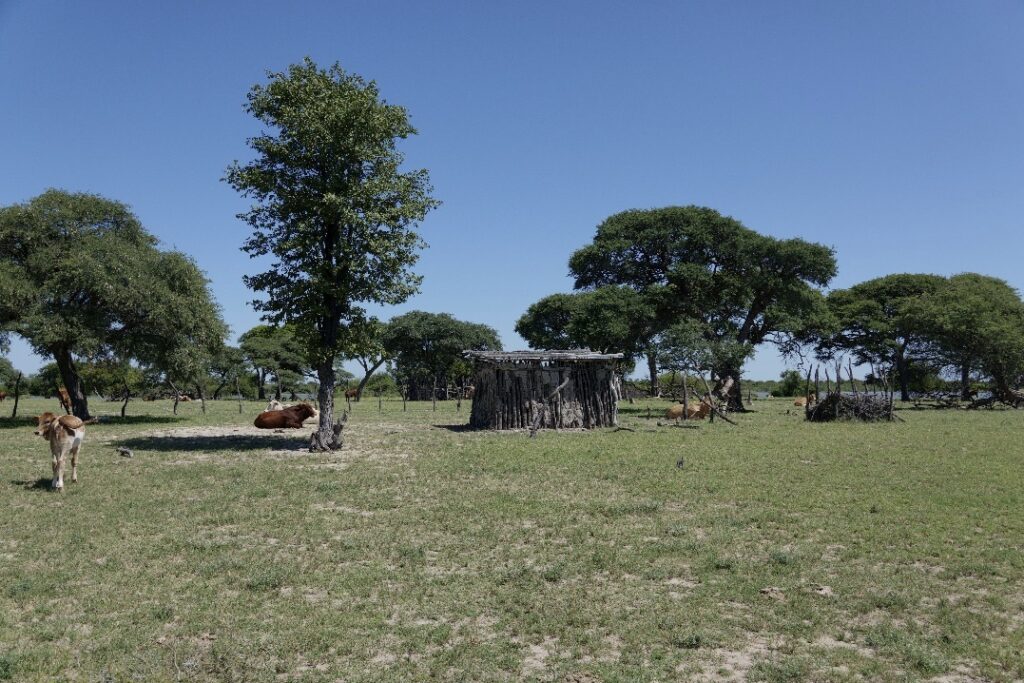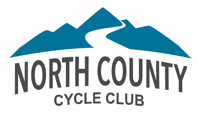Africa Rides
Everyone I’ve ridden with in NCCC over the past several years probably heard that my goal was to do a bike tour in Southern Africa. I finally got the chance this March.

This trip story is actually two rides in one. My wife Pam came to South Africa with me, and after spending a few days shopping and sightseeing in Capetown we did a four day tour of the “Winelands” to the east. Then, after viewing wildlife in Kruger National Park for a few days, Pam flew home and I joined an organized ride from Victoria Falls (Zambia), through Botswana and ending in Windhoek, capital of Namibia.
Capetown Winelands

We had never been to Africa before, and of course weren’t sure what to expect. The guidebooks, internet, etc, all said how beautiful Capetown is, how much there is to do, to be careful of crime. They didn’t say anything that I recall about the powerful winds. Fortunately Pam and I had e-bikes. Our two fellow riders were a local racer (the ride leader) and a very fit 30- something woman from the Dolomites in Italy. They didn’t have or need e-bikes.
We did about 60 miles a day, zig-zagging around to sample all possible wind directions each day. The scenery the first three days was large farms, mostly livestock (cattle, ostrich, sheep/goats) ranches or huge vineyards.

Claudia (Dolomites) was from a wine-making family so she scouted the best wineries in Stellenbosch and Franschhoek and we did very elegant tastings.

The third day we climbed the pass out of Franschhoek and on the other side I encountered a baboon family begging on the road. Afraid to take pictures, I passed them gingerly, then descended toward the coast. Pam and I then did a 20 mile packed dirt stretch through vineyards, then joined the other two and headed to Hermanus on the coast.
The coast road back toward Capetown was beautiful; reminiscent of the California coast except windier, plus more baboons. Our ride leader said they weren’t dangerous, but one stole Pam’s purse (with her passport) and took it to the roof of a nearby house; our ride leader climbed up and retrieved it.

If you are ever interested in bike touring in the Western Cape I would highly recommend Cape Cycle Tours. Craig is a strong and serious cyclist but was attentive to everyone’s interests. Prices were quite reasonable and accommodations were very nice (the small hotel in Hermanus was right on the beautiful coast).
Strictly speaking our time in Kruger Park was not bike related but here are a few pictures.




We didn’t see rhinos but did see the other four of the “big five” (lion, leopard, zebra, buffalo) plus lots else.
Victoria Falls to Windhoek, Namibia
The second (“long”) tour started at a lodge near Victoria Falls, on the Zambia side of the Zambezi River. I had the misfortune of having my cell phone and credit cards stolen in the Johannesburg airport on the way to the start, this made traveling and communications much more difficult the rest of the trip. In particular I only had time for a short visit to the falls and didn’t get any pictures.
This (my section) was a two-week, 1500km (two rest days en route) trip; 22 riders and seven staff, three support vehicles. In past years the whole tour started in Cairo and went to Capetown in eight sections, but due to Covid this year it started in Victoria Falls and is doing only three sections, going past Capetown through South Africa to Gqeberha (Port Elizabeth).
There were nine riders from Canada and the US, two from South Africa, two from Australia/New Zealand and the rest Europeans. I was the oldest but not by much. There were two other riders with Surly steel frame bikes, I was the slowest of the three.

The first day we paralleled the Zambezi for 60km to the new bridge to Botswana. Then a short ride to the lodge in Kasane, and that afternoon’s boat ride through Chobe National Park. I began a series of attitude adjustments, starting with the realization that in places besides California if it only looks like it might rain, it may really rain and pretty hard. So I learned the wet way to put my rain fly on and trench around the tent in those conditions.

Chobe had lots of hippos and wide expanses of water. And at least one notable crocodile (here’s to you Ken).

The next stretch of about 400km is known as the “Elephant Highway”, this due to there sometimes being elephants on or near the road. We were trained to (1) spot elephants, (2) stop and observe, (3) allow them to pass if they are ignoring you, (4) don’t continue to antagonize them if they face you and flap their ears. (They flap their ears to make themselves look as large as possible; whereas you might be tempted to saunter past a two-ton elephant, you wouldn’t consider confronting it if you estimated it as four-plus tons.)
The southbound stretches of this road were very straight, flat, lined with high grasses and mostly into a headwind. With no towns or settlements, and temperatures in the 80’s in the middle of the day. It got tedious sometimes until an elephant or three showed up.

We turned to the west on the fifth day and got more favorable winds. We also got two rest days in the next four calendar days. Some riders and I did two excursions on off days, one to see a meerkat colony and another overnight into the Okavango Delta. The delta is a sink—rivers coming from mountains in Angola once flowed to the Indian Ocean, but tectonic uplift trapped them and formed a huge shallow marshy area. We rode in Mokoro canoes to an island campsite, then hiked the next morning to see herds of zebra and buffalo (the giraffes were no-shows).



After leaving the Okavango we were supposed to be rested and fit, so we were faced with consecutive riding days of 156, 131 and 217 km (followed by two shorter days across the border in Namibia). I can proudly say I did all the big kilometers. Some tailwinds helped, so did the ride leader who fixed my flat tire at the 160km point of the longest day.

This tour section didn’t give us as much opportunity to interact with local people as some of us would have liked. A few of us riders discussed this; a major problem was that the region is sparsely populated and most settlements were not right on the paved road, but rather back in the bushveld (we passed some on drives during the two excursions).

The daughter of the woman in the picture is a doctor in the US. Her (grown) son has taken over running the family cattle business.
I probably missed the most interesting riding in Namibia, the continuing riders were putting on fat knobbies for the dirt roads coming up when I was packing to fly home. But I have no regrets, I saw and did a lot. In a whole new continent for me.

